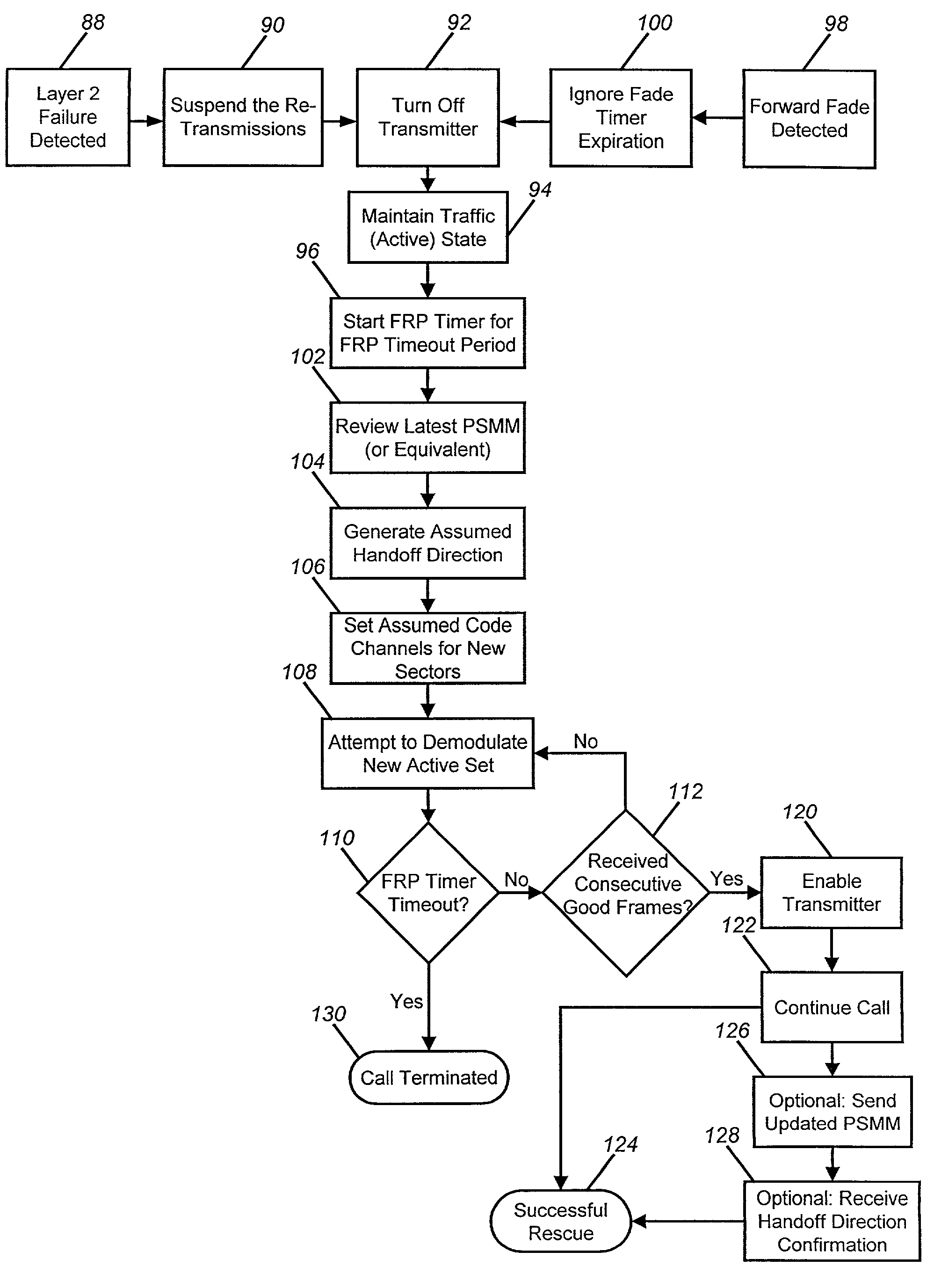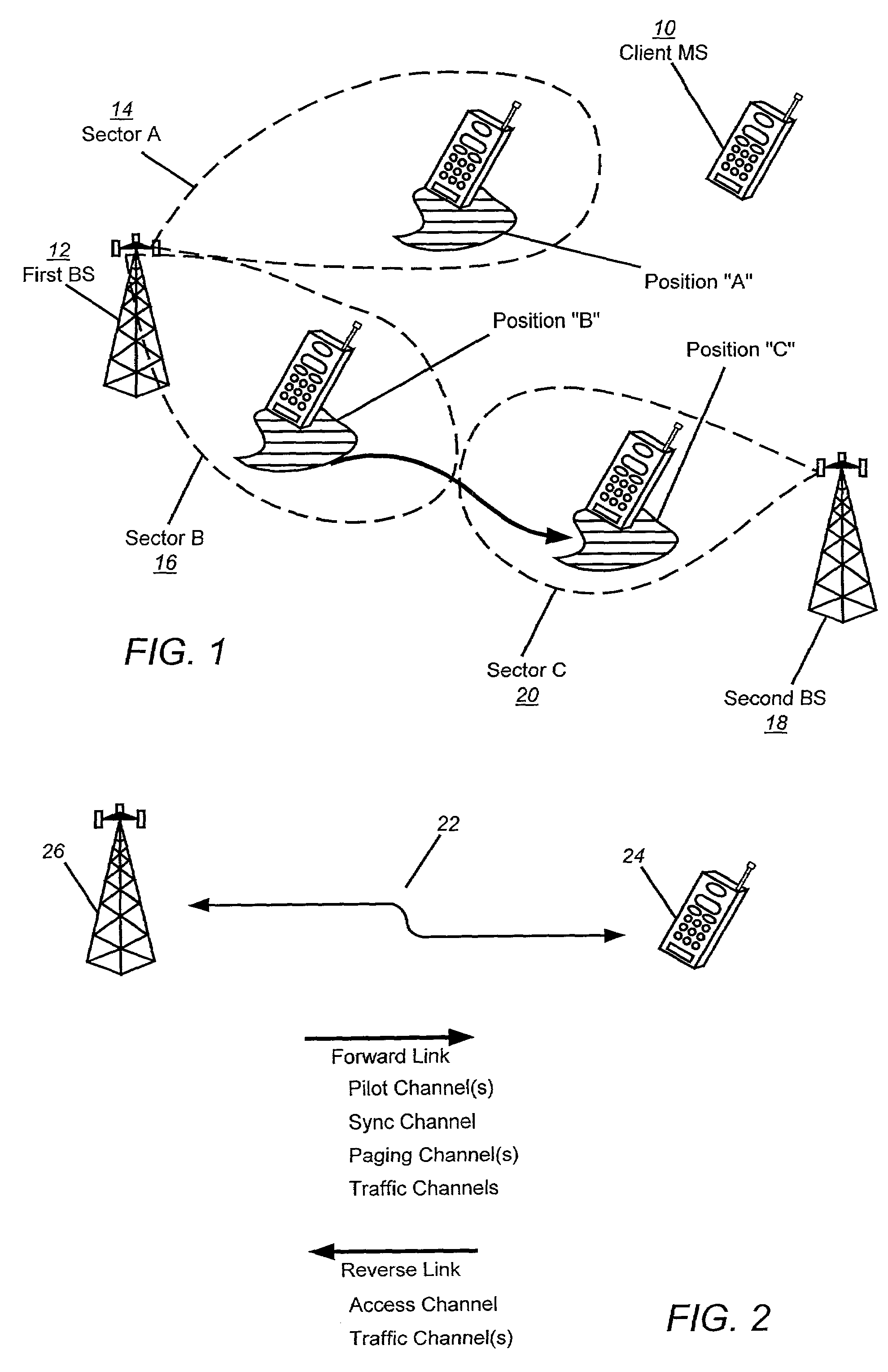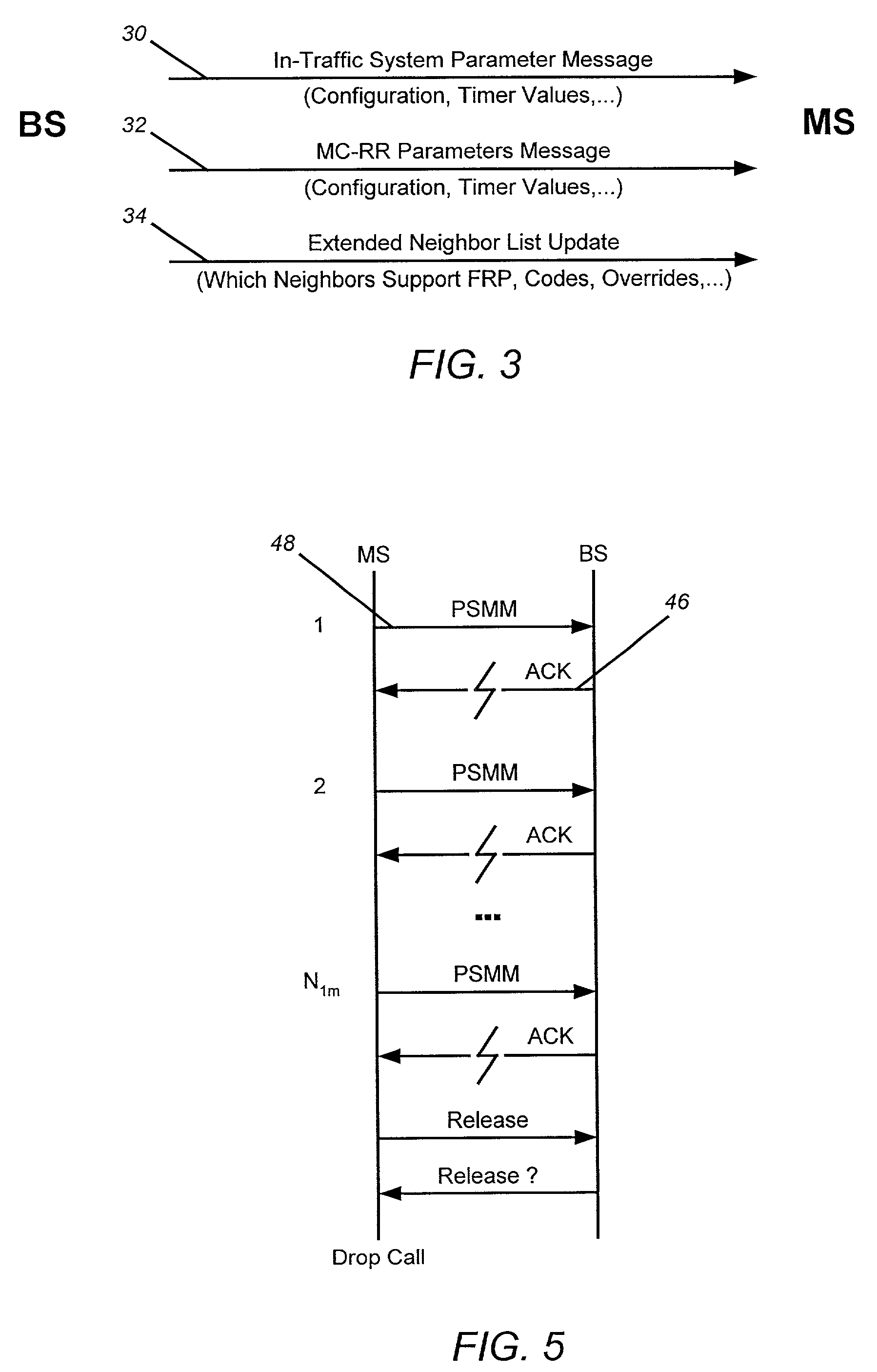Forward link based rescue channel method and apparatus for telecommunication systems
a forward link and rescue channel technology, applied in the field of communication network management, can solve the problems of consumer switching service providers, critical or even fatal drop of emergency 911 connection, and cellular telephone users' distress,
- Summary
- Abstract
- Description
- Claims
- Application Information
AI Technical Summary
Benefits of technology
Problems solved by technology
Method used
Image
Examples
Embodiment Construction
.” The further implementation of embodiments of this invention with other messaging protocols and data structures and communication systems is straightforward to one skilled in the art.
BRIEF DESCRIPTION OF THE DRAWINGS
[0032]FIG. 1 illustrates a roving mobile station moving amongst different locations between sectors in a wireless communication system.
[0033]FIG. 2 illustrates an exemplary communication link between a mobile station and a base station in a wireless communication system.
[0034]FIG. 3 illustrates overhead messages communicated from a base station to a mobile station in a wireless communication system.
[0035]FIG. 4 illustrates a wireless communication infrastructure in communication with a roving mobile station.
[0036]FIG. 5 is a message sequence between a mobile station and a base station resulting in a dropped connection due to Layer 2 Acknowledgement failure.
[0037]FIG. 6 is a timeline that is representative of a dropped connection resulting from fading of the forward lin...
PUM
 Login to View More
Login to View More Abstract
Description
Claims
Application Information
 Login to View More
Login to View More - R&D
- Intellectual Property
- Life Sciences
- Materials
- Tech Scout
- Unparalleled Data Quality
- Higher Quality Content
- 60% Fewer Hallucinations
Browse by: Latest US Patents, China's latest patents, Technical Efficacy Thesaurus, Application Domain, Technology Topic, Popular Technical Reports.
© 2025 PatSnap. All rights reserved.Legal|Privacy policy|Modern Slavery Act Transparency Statement|Sitemap|About US| Contact US: help@patsnap.com



